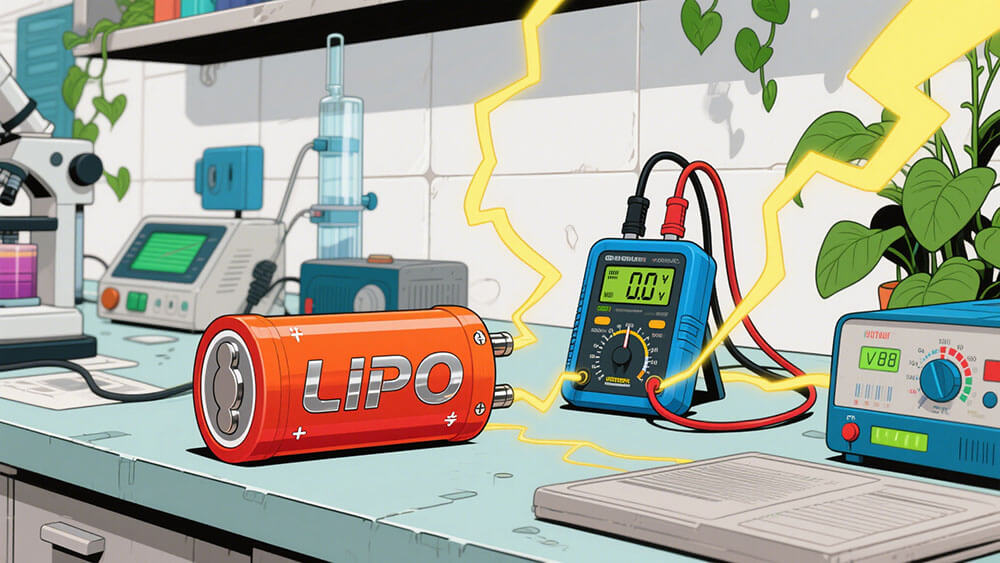
Understanding LiPo battery voltage is essential for achieving optimal performance in industrial and commercial applications. A single LiPo cell has a nominal voltage of 3.7V, forming the foundation for multi-cell configurations like 3S (11.1V) or 4S (14.8V) battery packs. Neglecting voltage management can lead to irreversible damage, reduced lifespan, and even safety hazards such as thermal runaway. Proper monitoring and maintenance not only improve reliability but also ensure adherence to critical safety considerations.
Key Takeaways
LiPo batteries usually have 3.7V per cell. Charge them safely between 3.0V and 4.2V to avoid harm.
Use balance chargers to keep all cells at the same voltage. This makes the battery last longer and work better.
Check voltage with alarms or meters while using the battery. This stops over-discharge and keeps the battery safe.
Part 1: Basics of LiPo Battery Voltage
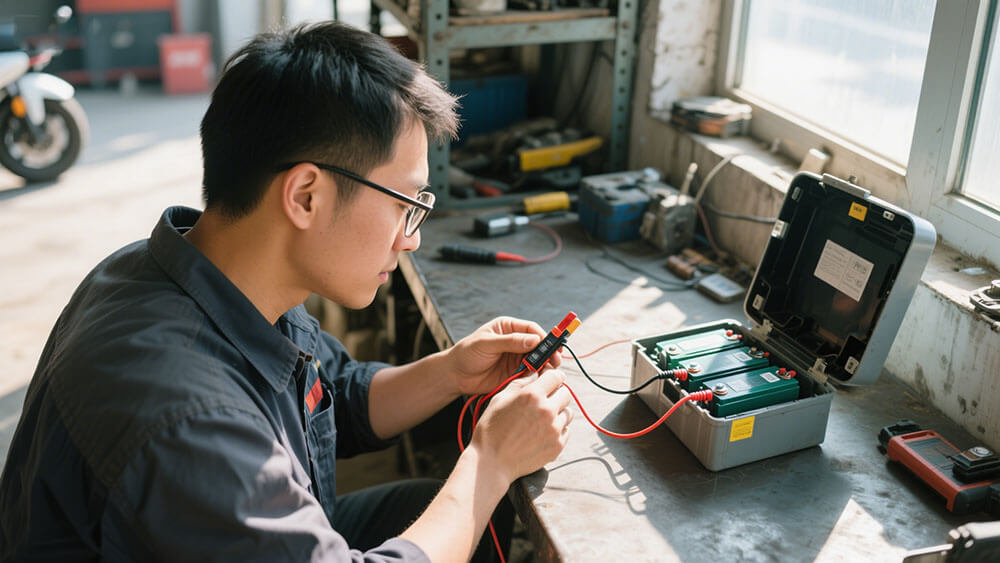
1.1 Defining LiPo Battery Voltage
LiPo battery voltage refers to the electrical potential difference across a single cell or a battery pack. Each LiPo cell operates within a specific voltage range, which determines its performance and safety characteristics. When you understand this voltage range, you can optimize the battery’s functionality and prevent damage caused by overcharging or excessive discharge.
Voltage is the key metric that defines how much energy a LiPo battery can deliver. For instance, a single cell has a nominal voltage of 3.7 volts, which serves as the baseline for calculating the total voltage in multi-cell configurations. Whether you’re using a 2S (7.4V) or 4S (14.8V) pack, the voltage directly impacts the power output and efficiency of your application.
1.2 Nominal, Minimum, and Maximum Voltage Ranges
LiPo batteries operate within three critical voltage ranges: nominal, minimum, and maximum. The nominal voltage, typically 3.7 volts per cell, represents the average voltage during normal operation. The minimum discharge voltage is 3.0 volts per cell, which marks the lowest safe limit before the battery risks permanent damage. On the other hand, the maximum charge voltage is 4.2 volts per cell, indicating the upper limit for safe charging.
For example, a two-cell LiPo battery has a voltage range from 8.4 volts when fully charged to 6.0 volts when depleted. Staying within these boundaries ensures the battery delivers consistent performance while maintaining its lifespan. Exceeding the maximum voltage during charging can lead to overheating, while discharging below the minimum voltage can cause irreversible damage to the battery’s chemistry.
1.3 Importance of Voltage Ranges in LiPo Batteries
Understanding and adhering to the voltage ranges of LiPo batteries is essential for maintaining their performance and safety. Operating outside these ranges can result in reduced capacity, shorter lifespan, and even hazardous conditions like thermal runaway. When you monitor voltage levels closely, you can prevent these risks and ensure the battery remains reliable for industrial or commercial use.
Voltage management also plays a crucial role in optimizing charging and discharging cycles. Proper charging practices, such as using balance chargers, help maintain uniform voltage across all cells in a battery pack. This prevents imbalances that could lead to uneven wear or reduced efficiency. Similarly, avoiding deep discharges protects the battery’s internal structure and extends its operational life.
By understanding the relationship between voltage and battery health, you can make informed decisions about how to use and maintain your LiPo batteries effectively. This knowledge not only enhances performance but also minimizes safety risks associated with improper voltage management.
Part 2: Relationship Between LiPo Battery Voltage and Performance
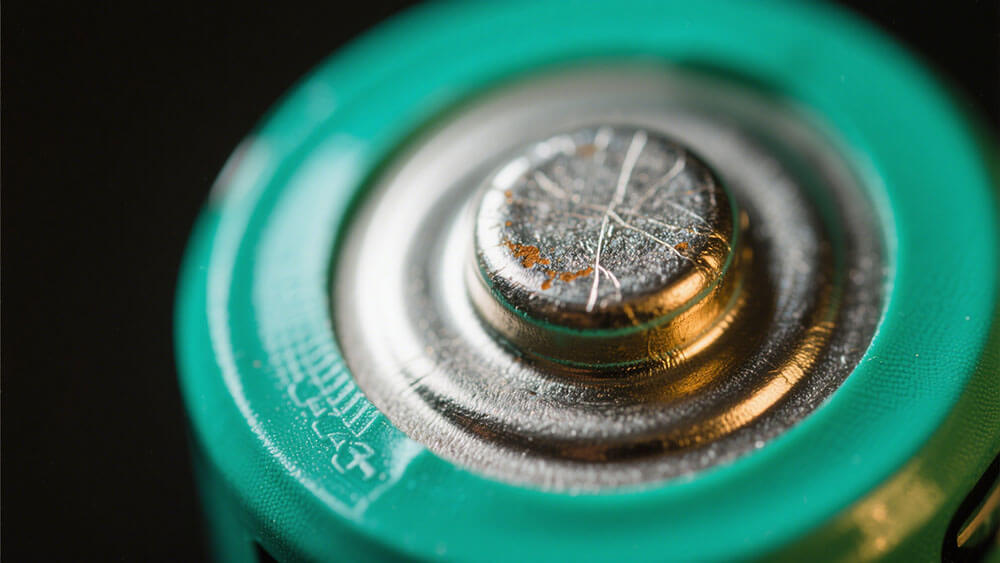
2.1 Voltage and Battery Capacity
The relationship between LiPo battery voltage and capacity plays a critical role in determining how much energy your battery can store and deliver. Voltage directly influences the battery’s ability to power devices efficiently. As the voltage decreases during discharge, the available capacity diminishes, impacting performance.
For example, a low voltage LiPo battery may struggle to provide sufficient power for high-demand applications. Monitoring voltage levels ensures you can maximize the usable capacity of your LiPo batteries. Using tools like voltage alarms or meters helps you track this relationship and avoid over-discharging, which can permanently reduce capacity.
2.2 Impact of Voltage on Battery Lifespan
Voltage management is essential for maximizing LiPo battery lifespan. Operating your battery within its safe voltage range prevents damage to its internal chemistry. Overcharging beyond 4.2 volts per cell or discharging below 3.0 volts per cell can lead to irreversible degradation.
Proper charging practices, such as using balance chargers, help maintain consistent voltage across all cells. This reduces wear and extends the battery’s operational life. Regular maintenance, including recovering low voltage LiPo batteries when necessary, ensures long-term reliability.
2.3 Safety Risks of Incorrect Voltage Levels
Incorrect voltage levels pose significant safety risks. Overcharging can cause overheating, leading to thermal runaway—a dangerous condition where the battery generates excessive heat and may catch fire. Similarly, discharging below the minimum voltage can destabilize the battery’s chemistry, increasing the risk of failure.
To mitigate these risks, you must monitor voltage levels during charging and discharging cycles. Employing safety tools like voltage alarms and balance chargers ensures your LiPo batteries remain within safe operating limits. Prioritizing voltage management not only protects your equipment but also safeguards against potential hazards.
Part 3: Monitoring and Maintaining LiPo Battery Voltage
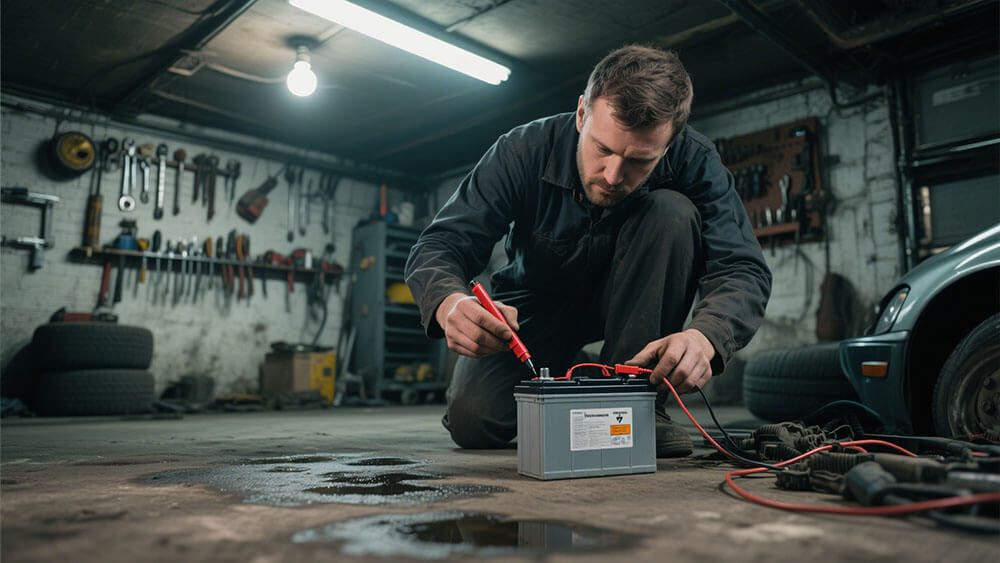
3.1 Tools for Voltage Monitoring: Alarms and Meters
Monitoring voltage is crucial for maintaining the health and performance of LiPo batteries. Voltage alarms and meters are essential tools that help you track voltage levels during charging and discharging cycles. These devices provide real-time feedback, allowing you to take immediate action if voltage levels approach unsafe thresholds.
Voltage alarms are compact devices that emit audible alerts when the voltage of any cell drops below a preset value. This feature is particularly useful for preventing over-discharge, which can permanently damage your battery. On the other hand, voltage meters offer precise readings of individual cell voltages, enabling you to identify imbalances within a battery pack.
Using these tools ensures that your LiPo batteries remain within their safe operating range. For example, a voltage meter can help you detect discrepancies in cell voltages during the balance charging process. If one cell reads 4.22V while another reads 4.16V, the meter highlights the imbalance, prompting corrective action. By incorporating these tools into your routine, you can extend the lifespan of your batteries and enhance their performance.
3.2 Using Balance Chargers for Voltage Maintenance
Balance chargers play a pivotal role in maintaining consistent voltage across all cells in a LiPo battery pack. These chargers ensure that each cell reaches the same voltage level during charging, preventing imbalances that could lead to uneven wear or reduced efficiency.
The balance charging process involves monitoring and adjusting the voltage of individual cells to achieve uniformity. For instance, users have reported achieving a mean cell voltage of 4.19V with a standard deviation of just 0.025V after balance charging. This level of precision minimizes the risk of overcharging or undercharging specific cells, which can compromise the battery’s overall performance.
Most balance chargers allow you to set parameters for the charging current and voltage thresholds. Some manufacturers recommend preset values, such as 10% of the charging current (e.g., 500mA for a 5A charge). Others use fixed values like 100mA or 20mA. By following these guidelines, you can optimize the charging process and ensure the safety of your batteries.
A general consensus among users suggests that a maximum voltage difference of 0.02V between cells is acceptable after balance charging. Achieving this level of uniformity not only enhances the battery’s reliability but also reduces the likelihood of safety risks associated with voltage imbalances.
3.3 Best Practices for Charging and Discharging LiPo Batteries
Adopting best practices for charging and discharging LiPo batteries is essential for maximizing their lifespan and ensuring safety. Controlled experiments and field data provide valuable insights into effective methods for managing these processes.
Charging Best Practices:
Use a charging current of 1C to avoid damaging the battery. Higher currents, such as 2C or 5C, can lead to a slight or significant drop in capacity, respectively.
Employ balance chargers to maintain uniform voltage across all cells. This prevents imbalances that could shorten the battery’s lifespan.
Monitor the charging process closely using voltage alarms or meters to ensure the battery remains within its safe voltage range.
Discharging Best Practices:
Avoid deep discharges below 3.0V per cell, as this can destabilize the battery’s chemistry and cause irreversible damage.
Use voltage alarms to track cell voltages during operation. These alarms help you prevent over-discharge, which can reduce the battery’s capacity permanently.
Implement gradual discharge cycles to minimize stress on the battery and extend its operational life.
By following these practices, you can optimize the relationship between LiPo battery voltage and charging cycles. This approach not only enhances performance but also minimizes safety risks associated with improper voltage management.
Part 4: Quick Reference Guide to LiPo Battery Voltage
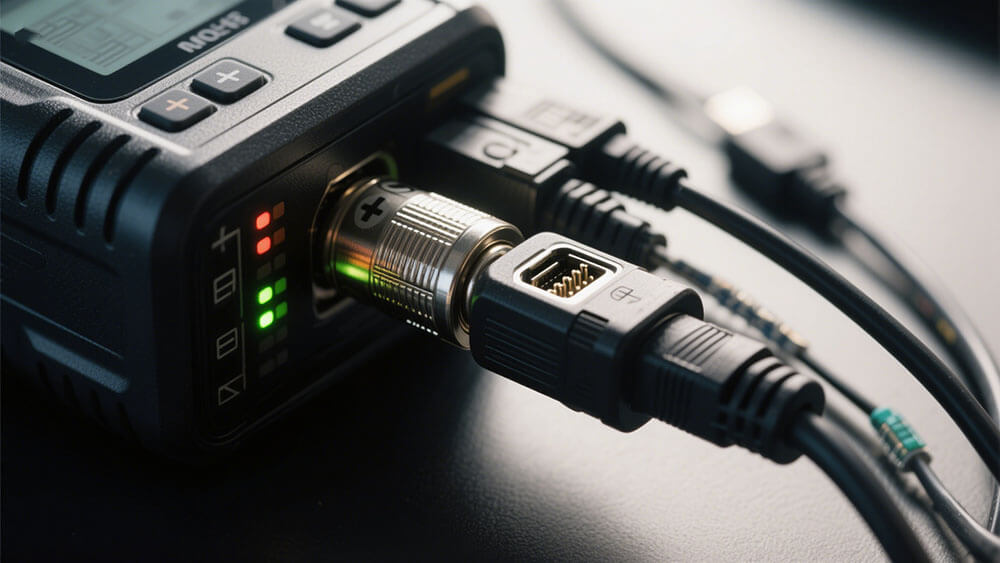
4.1 Safe Voltage Ranges for Industrial LiPo Battery Configurations
Understanding safe voltage ranges is essential for maintaining the performance and safety of LiPo batteries. Each configuration has specific nominal, minimum, and maximum voltage limits that you must adhere to during charging and discharging cycles. Exceeding these limits can lead to reduced efficiency, shortened lifespan, or even hazardous conditions.
The table below outlines the industry benchmarks for safe voltage ranges across various LiPo battery configurations:
Configuration | Nominal Voltage | Minimum Voltage | Maximum Voltage |
|---|---|---|---|
1S | 3.7V | 3.0V | 4.2V |
2S | 7.4V | 6.0V | 8.4V |
3S | 11.1V | 9.0V | 12.6V |
4S | 14.8V | 12.0V | 16.8V |
5S | 18.5V | 15.0V | 21.0V |
6S | 22.2V | 18.0V | 25.2V |
Adhering to these voltage ranges ensures your lithium polymer battery operates efficiently and safely, reducing the risk of damage or failure.
4.2 Voltage Levels and Their Effects on Performance
Voltage levels directly impact the performance of LiPo batteries. A fully charged battery delivers maximum power, while a depleted one struggles to meet energy demands. Operating within the recommended voltage range ensures consistent performance and prevents issues like voltage sag, which can disrupt high-demand applications.
For example, a 3S LiPo battery with a nominal voltage of 11.1V performs optimally when its voltage remains between 12.6V (fully charged) and 9.0V (minimum safe limit). Dropping below 9.0V can cause irreversible damage to the battery’s chemistry, reducing its capacity and lifespan.
Monitoring voltage levels during operation helps you maintain peak performance. Tools like voltage alarms and meters provide real-time feedback, allowing you to address potential issues before they escalate. This step-by-step process ensures your battery remains reliable and efficient.
4.3 Troubleshooting Voltage-Related Issues in LiPo Batteries
Voltage-related issues can compromise the safety and functionality of your LiPo batteries. Common problems include imbalanced cells, overcharging, and deep discharges. Addressing these issues promptly is crucial for maintaining battery health.
Here are some troubleshooting tips:
Imbalanced Cells: Use a balance charger to equalize cell voltages. Regular balancing prevents uneven wear and extends the battery’s lifespan.
Overcharging: Avoid exceeding 4.2V per cell. If overcharging occurs, inspect the battery for swelling or damage and follow safety protocols.
Deep Discharges: Never let voltage drop below 3.0V per cell. If this happens, attempt to recover the battery using a low-current charging method.
Taking these precautions ensures your LiPo batteries remain safe and functional. Regular maintenance and monitoring are key to preventing voltage-related failures.
Understanding and managing LiPo battery voltage is essential for ensuring safety and efficiency in industrial applications. Proper voltage management prevents issues like overcharging, deep discharges, and imbalanced cells, which can degrade performance and shorten battery lifespan.
To optimize performance, follow these actionable tips:
Use balance chargers to maintain uniform cell voltages.
Monitor voltage levels with alarms or meters to avoid unsafe thresholds.
Adhere to safe charging and discharging practices to extend battery life.
LiPo batteries operate within a nominal voltage of 3.7 volts per cell. Discharging below 3.0 volts or exceeding 4.2 volts during charging can compromise safety and efficiency. Careful voltage management ensures optimal energy output and longevity.
Incorporating advanced tools and best practices into your routine will help you maximize the reliability and safety of your LiPo batteries.
FAQ
1. What happens if you overcharge a LiPo battery?
Overcharging a LiPo battery can cause overheating, swelling, or even thermal runaway. Always use a balance charger to prevent exceeding the safe voltage limit of 4.2V per cell.
2. How can you recover a deeply discharged LiPo battery?
You can attempt recovery by using a low-current charging method. However, if the voltage drops below 3.0V per cell, the battery may suffer permanent damage and require replacement.
3. Are voltage alarms necessary for LiPo batteries?
Yes, voltage alarms are essential. They alert you when cell voltage drops below safe levels, preventing over-discharge and extending the battery’s lifespan. 🛠️ Always monitor voltage during use.
For customized solutions tailored to your battery assembly needs, explore Large Power’s custom battery solutions.






